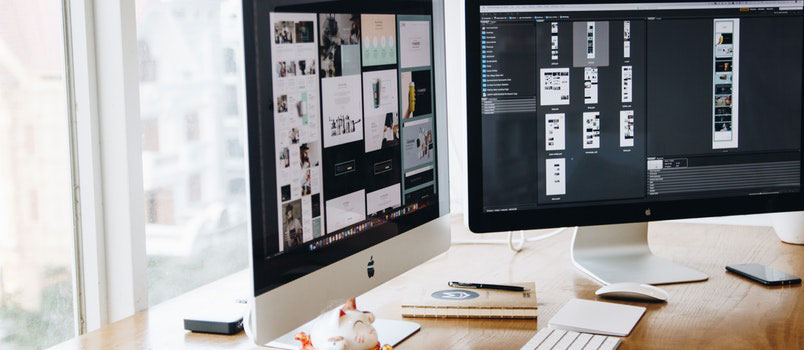Digital technology is in a constant state of upgrades and improvements. In the world of website development and design, this proves especially true as trends and updates are constantly evolving. Website design features that were a major trend mere months ago become obsolete within an incredibly short period of time, which means that designers and developers must constantly be on the lookout for the next big thing for their websites.
According to a study conducted by WebFX, 75% of website credibility comes from the design and 94% of a brand or company’s first impression relates to the website’s design. With these enormous stats, it’s obvious that companies simply can’t afford to have an outdated or unappealing design if they want to stay relevant.
2020 has been a year of advancements and a turn to new heights of realism reflected in website design. Designers have been blending the digital world with the real world in a way that reflects just how much websites have become a part of everyday life. This year has seen a multitude of new development frameworks to build these designs as well.
Based on those trends, what can the world of website development and design expect to see in the coming new year? How can companies get a jump on these trends now before they’re left in the past by the latest and greatest?
The Must-Have Website Design Elements of 2021
The following are just a few examples of the trends, design elements, and overall innovations that 2021 will have in store for the world of websites.
– Parallax Animation – Year after year, web-based animation trends have continued to rise in popularity. As technology has progressed, these animations have also become more and more complex through the separation of foreground and background elements, creating what’s known as a parallax effect. This effect adds depth to otherwise rather flat designs and helps immerse the user in the screen to draw them in.
A parallax effect is technically defined as the optical illusion that occurs when objects that are closer to the viewer appear to move faster than those in the background or far way. This is obviously a common occurrence in everyday life in situations like driving past scenery, but the effect translated to a web page makes everything feel almost surreal.
– Dark Mode – Ask any millennial or avid tech user about dark mode and chances are in favor that they prefer a dark mode version of apps and websites rather than the bright white version. Many popular apps, such as Reddit, Twitter, and WhatsApp, have all rolled out dark mode or dark theme options for users. Some even switch automatically at night for a more comfortable scrolling experience.
While mostly used for mobile apps, dark mode is implementable on website designs as well. Instead of the stark, fresh white backgrounds and space of the past, many companies are choosing to move towards black-forward designs. This simple color change gives websites a completely different look while making design elements more visible, increasing the contrast ratio, and giving an overall more elegant vibe. It also puts much less stress on the user’s eyes.
– Mobile-First Design – The mobile-first approach to website design is a trend that has gained a significant amount of traction over the past few years. However, in 2021, it’s going to be absolutely non-negotiable for website designers. Although some designers and dev teams try to account for both desktop and mobile functionality through responsive design (meaning that the page adjusts to the size of the window used to view the site), that simply will not cut it anymore.
A growing number of users use mobile devices as their first or only method of accessing the internet. If companies or brands want to make sure that their users want to come back again and again, they must ensure that the UX/UI and overall user experience on mobile is the top priority during the development process otherwise they can forget about repeat customers. Mobile-first websites are also ranking higher in Google search results, making it better for search engine optimization efforts.
– Asymmetric Layouts – Designers typically build websites on a grid to help streamline the structure and focus on key elements within a symmetrical layout. This gets rather repetitive and boring for users to experience site after site. To get users’ attention better, many designers turn towards asymmetry to create an individual, attention-grabbing feel.
With an asymmetric design, designers have the ability to experiment with unbalanced and dynamic compositions with features such as overlaying multiple elements, embracing empty space, and collapse gutters. The viewers’ eyes are always fixed on the largest elements as well. However, designers must continue to strive to create a sense of balance within every website so that no part of the page looks heavier or more focused than the rest. User testing is the best way to know if an asymmetric design works.
While seeing the future is still not a real possibility, website designers and developers should definitely expect to see these design features in sites of the upcoming year.































